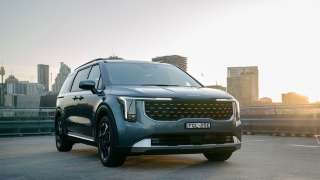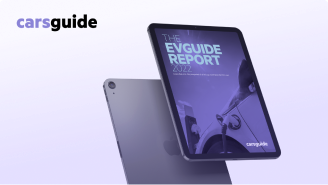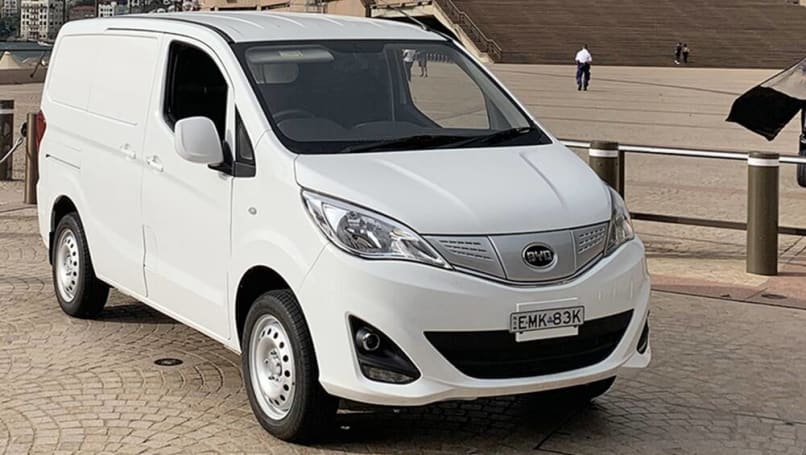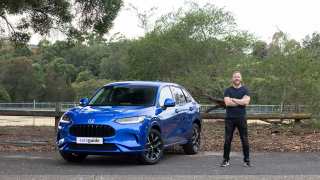
Five best EV vans in Australia
- Ford Transit
- Mercedes-Benz Vito
- Renault Kangoo
- BYD T3
- BYD T3 2022
- Mercedes-Benz Vito 2022
- Ford Transit 2022
- Renault Kangoo 2022
- Ford Commercial Range
- Mercedes-Benz Commercial Range
- Renault Commercial Range
- Volkswagen Commercial Range
- BYD Commercial Range
- Commercial
- Electric Cars
- Ford Transit Reviews
- Mercedes-Benz Vito Reviews
- Renault Kangoo Reviews
- BYD T3 Reviews
- Ford
- Mercedes-Benz
- Renault
- Volkswagen
- BYD
- EV Advice
- Ford Advice
- Mercedes-Benz Advice
- Renault Advice
- Volkswagen Advice
- BYD Advice
- EV
- Small Cars
- Electric
- Electric Cars
- EVs
- Tradie
- Tradies
- Green Cars

Electric cars are all the rage these days with exciting new models from Audi all the way to Volvo, offering a zero emissions future.
But passenger cars and SUVs only make up part of all vehicles on the road, with commercial vans a major factor in producing harmful emissions. Which is why car makers are using electric technology and transferring it to commercial vehicles.
Read more about electric cars
The electric van market is expanding almost as rapidly as the passenger vehicle segment, with more and more brands racing to get zero emission vans as businesses look for ways to either make a meaningful change to the environment, or at least be seen to be trying.
There are several electric vans in Australia today and more are arriving soon.
What is an electric van?
Just like an electric car, electric vans swap the internal combustion engine for a motor and batteries. The large floor area of a van allows for the batteries to be packaged neatly underneath, providing suitable range without compromising the van's key attributes - practicality and space.
On the surface electric vans may not seem to make sense. After all, unlike people’s private cars which typically only commute to and from work, a van is often used for daily deliveries which means extended driving throughout the day.


Download the EVGuide Report, 2022
Australia's one-stop snapshot of all things relating to electric cars.
However, with most modern delivery businesses knowing how much driving each van must do in a day, coupled with the increased battery range, a modern electric van makes sense for an increasing number of businesses.
Add to that the fluctuations in fuel prices which means electric vans can be significantly cheaper to operate and there’s more reasons for making the switch.
For example, online shopping giant Amazon partnered with EV start-up Rivian to design a bespoke Amazon delivery van. The deal calls for 100,000 electric vans to be built in the coming years, which the companies claim has the potential to save “millions of metric tons of carbon per year” once all have been built and delivered.
How many electric vans are available in Australia, how do we compare to different parts of the world?

At the time of publication there is only one electric van for sale in Australia, the Renault Kangoo ZE (Zero Emission). This electric version of the French brand’s light duty van competes with the likes of the Volkswagen Caddy and Peugeot Partner.
New Chinese brand, BYD, announced pricing for its new electric van in 2021 but only offered 50 examples for sale. The BYD T3 is similar in size but undercuts the Renault significantly on price. The BYD T3 is priced from $34,950 (plus on-road costs) compared to $50,290 (plus ORCs) for the Kangoo ZE.
There are several more on the way, with a huge variety already available around the world. These existing electric vans include the Citroen e-Dispatch, e-Berlingo and e-Relay; Peugeot e-Expert, e-Partner and e-Boxer; Fiat E-Ducato, Ford E-Transit; Mercedes-Benz eSprinter and eVito; and the recently revealed Volkswagen ID. Buzz Cargo.
The best electric vans available to buy in Australia.
Renault Kangoo ZE

As mentioned earlier, the Renault electric van was the first of its kind to reach Australian roads when it launched in 2020.
The Kangoo ZE carried a significant premium over its diesel-powered equivalent ($17,800) but it has still found buyers happy to pay more for the benefits of electrification; Australia Post has been using them since 2014.
The electric motor provides 44kW of power, plus it has a real-world range of 200km, cargo capacity of 3.9 cubic-metres and a 600kg payload. Renault will actually improve the range with the updated Kangoo E-Tech due to arrive in late 2022, which will boast a real-world driving range of 300km.
BYD T3

The T3 has the distinction of not just being the cheapest electric van but the most affordable EV of any kind in Australia at the time of publication. As mentioned earlier, with a starting price of $34,950 (plus on-road costs) it’s much cheaper than the Renault, but comes with the added challenge of being an all-new brand and is only available to order online.
The T3 is powered by a 70kW front-mounted electric motor and has a claimed driving range of 300km. It’s top speed is limited to only 100km/h, so if you do long highway stretches this may not be the van for you.
The T3 has 3.8 cubic-metres of cargo volume and a maximum payload of 700kg, which puts it slighly ahead of the Renault in practical terms.
Ford E-Transit

While local management probably would have preferred the Mustang Mach-E or F-150 Lightning, the tip of the spear for the blue oval’s electric future will be a van. Due to arrive in the middle of 2022 the E-Transit will be the first large van available in Australia, dwarfing the Renault and BYD.
Powered by a 190kW/430Nm electric motor that powers the rear wheels, the E-Transit has a driving range of 317km thanks to its 68kWh battery. Ford claims it will charge from a conventional outlet in eight-hours but on a DC fast charger it can go from 15 to 80 per cent in just 34 minutes.
Because the batteries and motor are mounted under the floor, Ford says no cargo space has been lost, which means 11.5 cubic-metres of room.
Mercedes-Benz eVito

If you want a Mercedes electric van then you’re in luck, because the German luxury brand will introduce not one, but three battery-powered vans in 2022 including the eVito commercial vehicle. Sitting alongside the incoming EQV and eVito Tourer people movers, the eVito LCV will arrive in the middle of the year.
Local specifications haven’t been released yet, but in Europe the eVito is powered by a 85kW/300Nm front-wheel drive electric motor with a 35kW battery that provides 148km of range.
But the eVito is just the first, with Mercedes-Benz Australia confirming in late 2021 that it will add the next-generation eSprinter to its commercial line-up in 2024.
Volkswagen ID. Buzz Cargo

The German brand only recently revealed the production version of its long-awaited ID. Buzz concept that first appeared in 2017. This new VW electric van is deliberately designed to conjure up memories of the original Kombi, albeit with a modern twist under the surface.
That’s the same ‘MEB’ EV platform that the German giant uses for its ID.3 and ID.4 passenger vehicles. It allows the ID. Buzz Cargo to have a rear-mounted electric motor (like the Kombi) that makes 150kW and has a 82kWh lithium-ion battery. Volkswagen hasn’t revealed range yet but have said the battery is bi-directional so it can send power into your household system if needed (and if you have the correct wall box).
In terms of space, VW claims the Cargo can take two Euro pallets in the rear load area.
Volkswagen Australia hasn’t confirmed the ID. Buzz Cargo for Australia, instead the priority is the ID.3 and ID.4, but given the company’s desire to be seen as a technology leader it’s highly likely this van will arrive in local showrooms in the next three years.
What is the future of electric vans in Australia?

If we look ahead to where we will be in one year, five years, 10 years, 20 years the answer is probably the same as we find in the passenger vehicle market, with more electric models replacing petrol and diesel options.
In the short-term - one to five years - it will take time for commercial van users to be convinced of the merits of electric vans, particularly those with less driving range. However, in the next decade and beyond as battery technology improves it’s likely most commercial fleets will make the switch to electric vans as they become more capable.
Car makers have spoken about the potential for a commercial fleet to be used as a way of saving energy costs for larger companies as Vehicle-to-Grid (V2G) becomes more commonplace. The scenario plays out like this: a large fleet of electric vans could return to base overnight and push the remaining battery energy into the electricity grid during the evening peak (between 6-9pm). The company could potentially then earn money or a rebate from the electricity provider and then recharge the vans off-peak overnight.
That’s a best-case scenario but one that demonstrates the potential of electric vans.










Comments